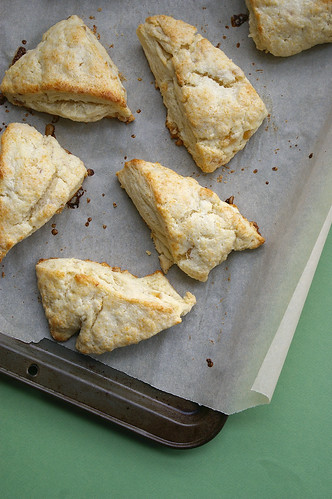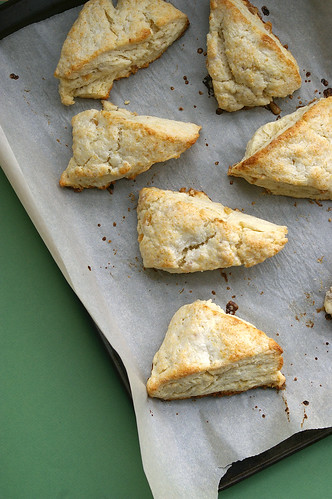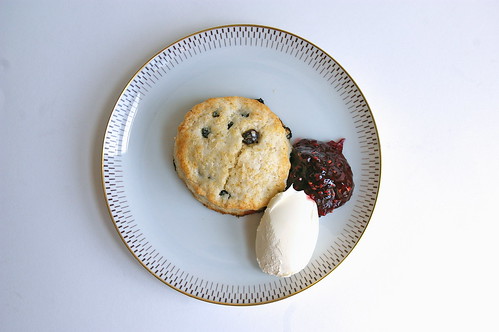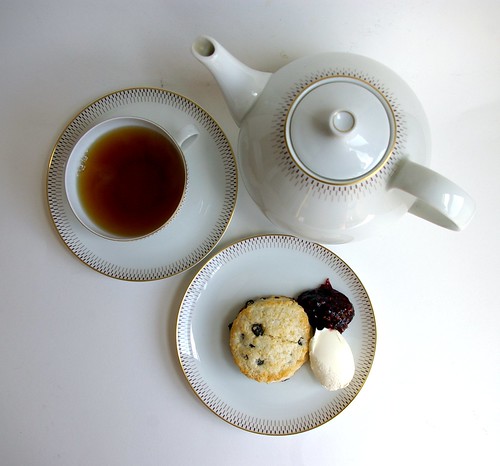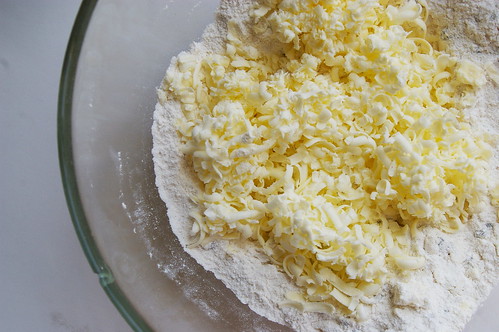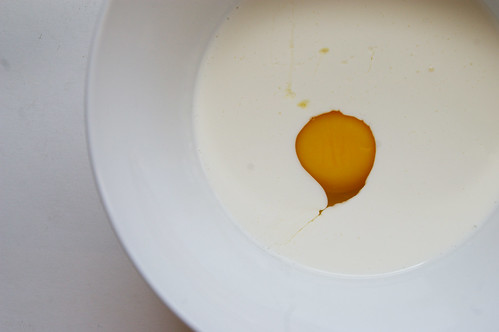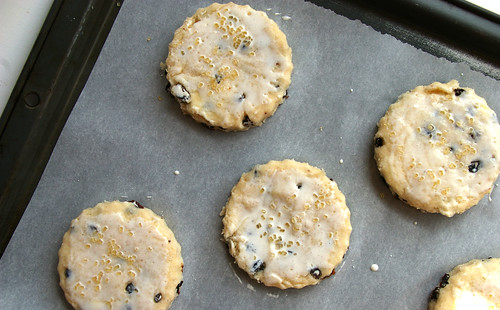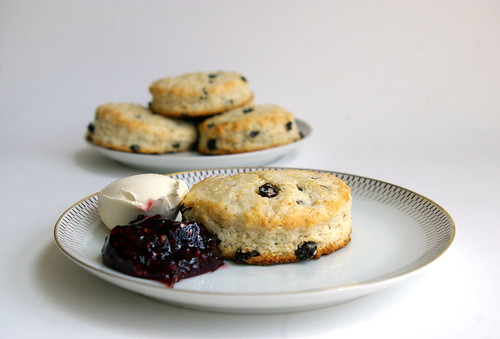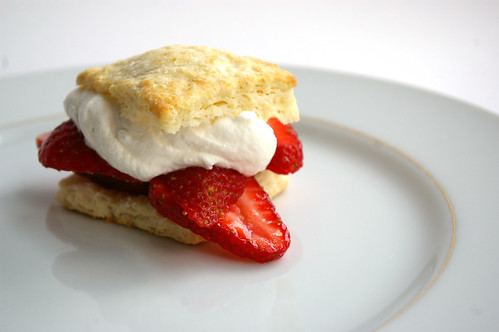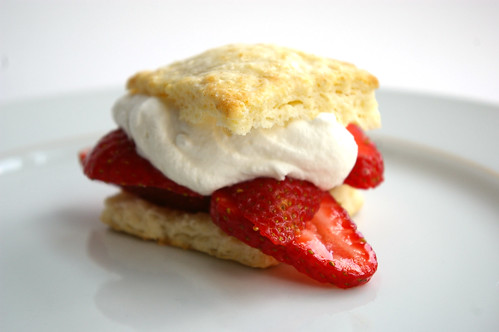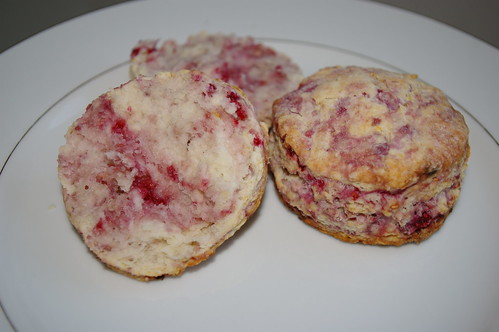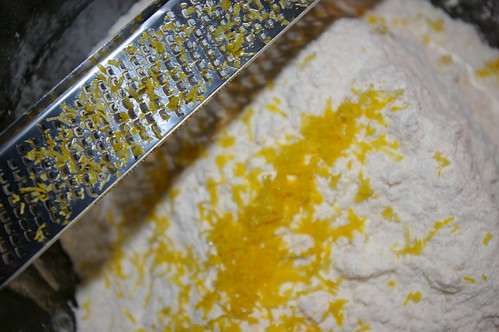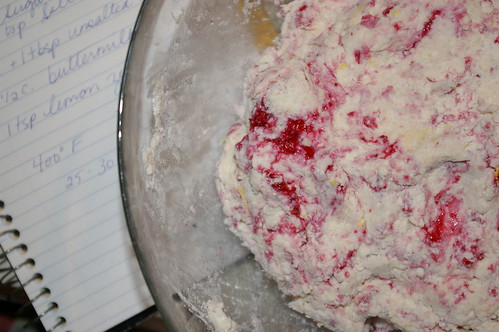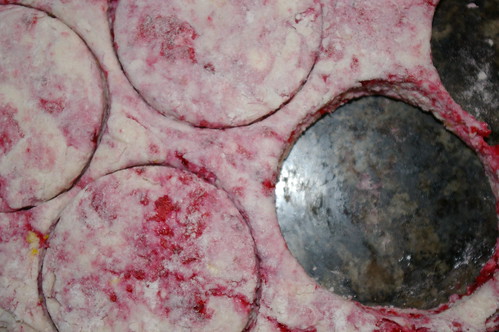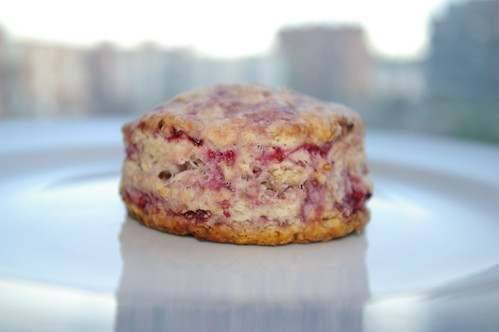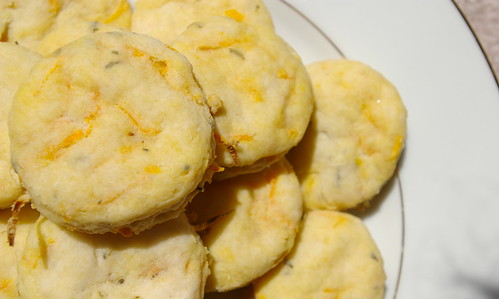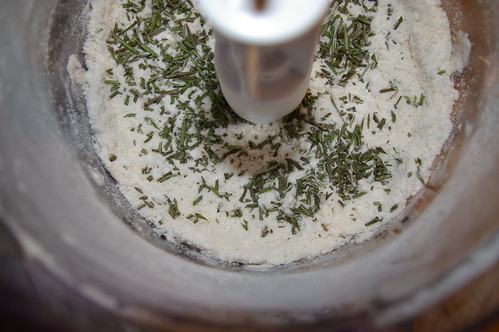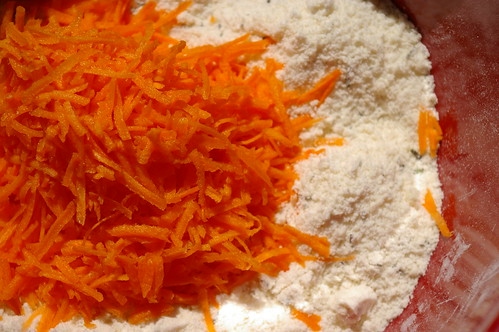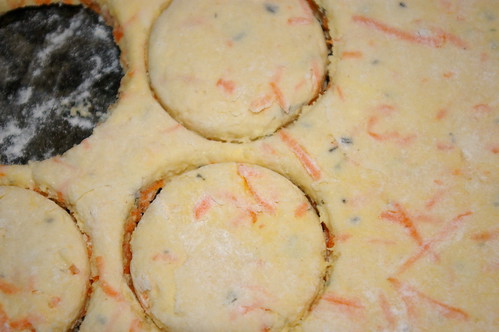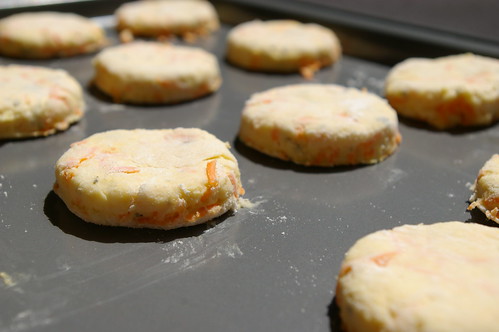It’s hard to be creative when it’s this hot and my laptop is cooking my thighs.
It’s probably even too hot to be turning on the oven, but I did it today anyway. The idea of fresh scones overpowered my hatred for the heat. Especially the idea of scones studded with fresh and sweet strawberries.
I had bought the strawberries yesterday for no reason other than I wanted that taste of summer. As I lay in bed last night, I was thinking Strawberry Shortcakes would be the perfect vehicle. And then I started to think about some scones where the strawberries are actually baked into them instead of being served on the side. Cream scones, I thought. Playing with the whole idea of strawberries and cream. And also, not dealing with trying to keep cold butter actually cold on a hot day.
The idea isn’t original; there are a lot of recipes out there on the web for Strawberry Scones. But I also thought of putting a twist on them by serving alongside some compound butter made from strawberries and a bit of freshly cracked black pepper.
It was tempting enough to turn on the oven.
The beauty of cream scones is how quickly they come together and how little forethought is needed. The dangers of cream scones are exactly the same.
But when you don’t want to put in the kitchen for very long, they are ideal. Stir together flour, baking powder, sugar and salt. Add cream. Stir. Pat together. Cut and bake. Done.
Compound butter is just about as easy. Mix softened butter with herbs, zest, bits of fruit, spices or whatever else and then refrigerate.
So, as baking projects go, this one couldn’t be much more straightforward.
When I started trying to figure out what to say about these recipes, I joked on twitter that I should just write, “Makes these, they’re tasty.”
But, really, make these, they’re tasty.
Strawberry Cream Scones
Adapted slightly from Joy the Baker who, in turn, adapted them slightly from King Arthur Flour.
- 3 cups all-purpose flour
- 1 tablespoon baking powder
- 1 teaspoon salt
- 1/3 cup granulated sugar, plus more for sprinkling
- 1 1/2 cups whipping cream (approximately), plus more for the egg wash
- 1 teaspoon vanilla
- 1 cup strawberries, cored and chopped
- 1 egg
Preheat the oven to 425F and line a baking sheet with parchment paper.
In a medium bowl, whisk the flour, baking powder, salt and sugar. Add the chopped strawberries. Pour over the whipping cream and then drizzle in the vanilla before gently stirring it all together. If there are a lot of dry patches, add another tablespoon or two of cream — just enough to create a dough. Scrape the dough out onto a clean surface and gather it together, kneading slightly until it all comes together. Pat into a circle about 1 inch thick and cut into eight wedges. (Or, alternatively, use a biscuit cutter to cut out circles of the dough.)
Place the wedges on the baking sheet.
In a small bowl, whisk together the egg and a splash of whipping cream. Brush over the top of the dough wedges and sprinkle with sugar.
Bake until golden and cooked through, about 14 to 18 minutes.
Serve as is or with the Strawberry-Black Pepper Butter (recipe below).
Strawberry-Black Pepper Butter
- 1/4 cup butter, softened
- 1 large strawberry, minced (approximately 2 tablespoons)
- 1/8 teaspoon freshly ground black pepper
- Pinch sea salt
- Pinch or two of sugar
In a small bowl, mix together the butter, strawberry pieces, black pepper, salt and sugar. While stirring, press bits of the strawberries against the side of the bowl to squish them and release some of their juice. Taste for seasonings, adding more sugar, pepper or salt.
Refrigerate until ready to serve.

